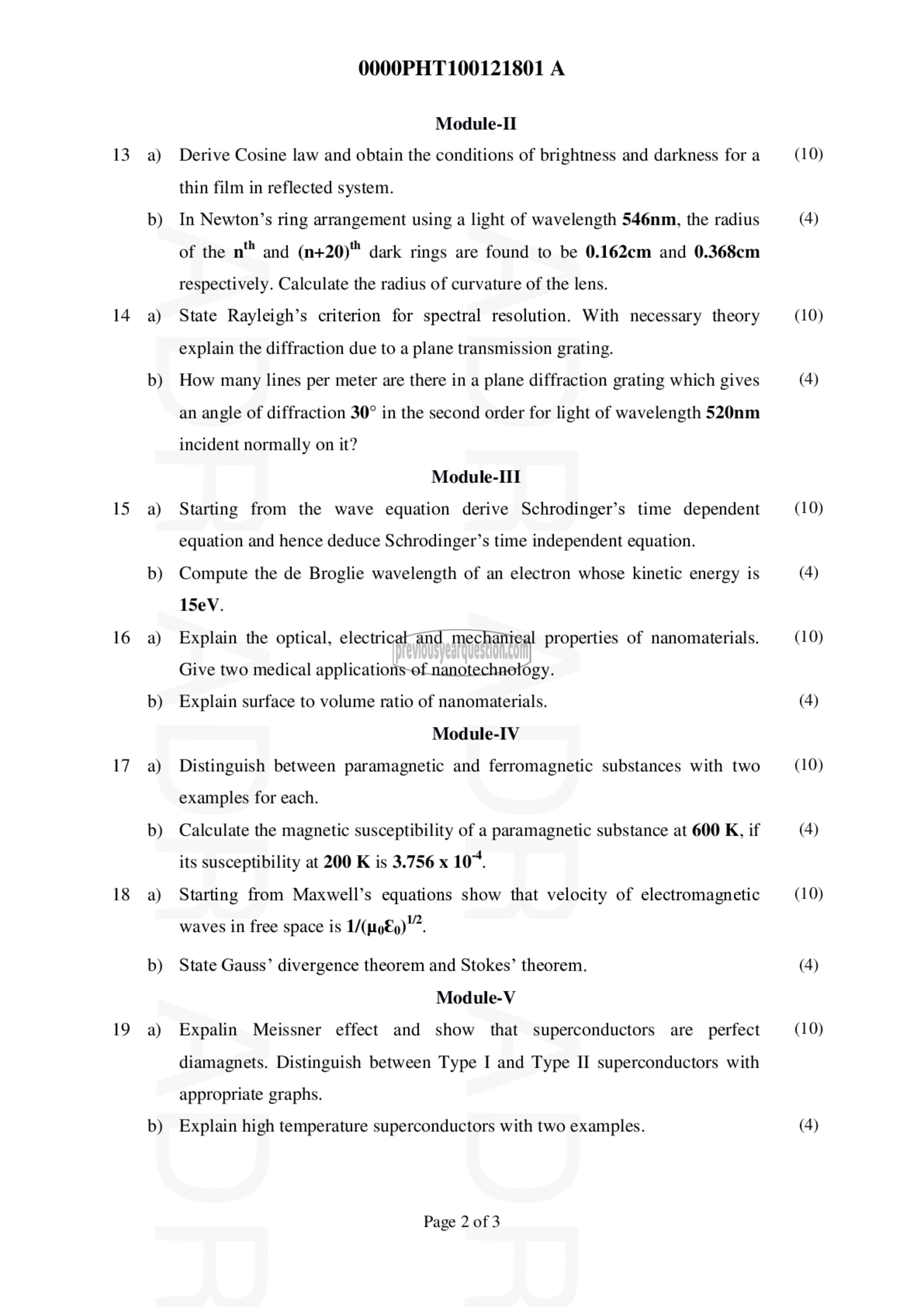APJ ABDUL KALAM TECHNOLOGICAL UNIVERSITY Previous Years Question Paper & Answer
Semester : SEMESTER 1
Subject : ENGINEERING PHYSICSA
Year : 2020
Term : DECEMBER
Scheme : 2019 Full Time
Course Code : PHT 100
Page:2
13
14
15
16
17
18
19
a)
b)
a)
b)
a)
b)
a)
b)
a)
b)
a)
b)
a)
b)
00000111 100121801 A
Module-II
Derive Cosine law and obtain the conditions of brightness and darkness for a
thin film in reflected system.
In Newton’s ring arrangement using a light of wavelength 546nm, the radius
of the n' and (7-20) dark rings are found to be 0.162cm and 0.368cm
respectively. Calculate the radius of curvature of the lens.
State Rayleigh’s criterion for spectral resolution. With necessary theory
explain the diffraction due to a plane transmission grating.
How many lines per meter are there in a plane diffraction grating which gives
an angle of diffraction 30° in the second order for light of wavelength 520nm
incident normally on it?
Module-III
Starting from the wave equation derive Schrodinger’s time dependent
equation and hence deduce Schrodinger’s time independent equation.
Compute the de Broglie wavelength of an electron whose kinetic energy is
15eV.
Explain the optical, electrical and mechanical properties of nanomaterials.
Give two medical applications of nanotechnology.
Explain surface to volume ratio of nanomaterials.
Module-IV
Distinguish between paramagnetic and ferromagnetic substances with two
examples for each.
Calculate the magnetic susceptibility of a paramagnetic substance at 600 K, if
its susceptibility at 200 K is 3.756 x 101.
Starting from Maxwell’s equations show that velocity of electromagnetic
waves in free space is 1/(॥0६0)14.
State Gauss’ divergence theorem and Stokes’ theorem.
Module-V
Expalin Meissner effect and show that superconductors are perfect
diamagnets. Distinguish between Type I and Type II superconductors with
appropriate graphs.
Explain high temperature superconductors with two examples.
Page 2 of 3
(10)
(4)
(10)
(4)
(10)
(4)
(10)
(4)
(10)
(4)
(10)
(4)
(10)
(4)
